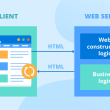As a software developer, you know that regression testing is an important part of the development process. But what is regression testing, and why is it so important? In this article, we’ll explore the different types of regression testing and explain why they’re essential to the software development process. We’ll also look at some tools you can use to make regression testing more manageable and more effective.
What is Regression Testing?
Regression testing is an essential part of software development. Without it, software malfunctions, bugs, and other issues could easily go unchecked leading to costly consequences. In execution, regression testing involves retesting parts or the whole of a software application after modifications were made to ensure that previously passed tests are still valid and nothing new was broken in the process. So now knowing what is regression testing you understand that it’s not glamorous work, but regression testing plays a key role in ensuring quality assurance and the integrity of an application prior to its release. It’s likely one of the reasons why your favorite apps keep running smoothly under different conditions.
Benefits of Regression Testing
Regression testing is a method of preventing software errors from re-occurring, which can save significant time and resources. This type of testing is also valuable for determining any impacts of changes to the program—from adjustments in the code to interconnecting parts or to updates in other software packages within the overall system. In addition, the benefits of regression testing include maintenance of the protection of data privacy and security. Testing done on a regular schedule ensures that customers’ information is safely stored and handled even when changes are made, allowing businesses to maintain their customers’ trust. Furthermore, it confirms proper communication between programs so that data is never lost or misplaced during processing. For these reasons, many companies find regression testing immensely beneficial and well worth the effort as part of their quality assurance process.
It’s no secret that regression testing can be a costly endeavor for any organization, regardless of size. A variety of factors contribute to the amount an organization might need to budget for regression testing, including the complexity of the software or product being tested and how often tests will be conducted. Careful planning is key when it comes to managing costs associated with regression testing. By hiring talented professionals who are familiar with both the product and the process, organizations can reduce costs while still achieving excellent results. Regression testing is an important step in the development process, so organizations should take the time to craft a solid plan that meets their security and performance standards without breaking their budget.
Two of the most common methods are manual and automated regression testing. Manual regression tests involve going through a lengthy process of testing the code or feature set manually, which requires technical knowledge and thorough attention to detail. Automated regression tests use specialized tools that allow developers to run scripted tests much more quickly, but it also requires strong coding skills and may be limited to certain types of tests, meaning manual testing could still be necessary for more specific tasks. Both manual and automated regression testing have their advantages and drawbacks, so when deciding which approach is best suited for your project, consider all factors including cost efficiency, time investment, quality assurance, scalability, and overall complexity.
Regression Testing Issues
Regression testing helps to catch bugs when adding new features or updates to an existing codebase, as well as troubleshoot application crashes and performance bottlenecks. However, when performing a regression test, the tester faces a number of problems.
Some of the main challenges that testers face:
- Upfront cost and time: As new features are introduced, the regression test suite needs to be continuously optimized. As a result, the number of test cases varies and existing tests need to be re-run along with new tests that take a long time to run. Parallel testing can be beneficial because it allows you to run test cases in parallel across different browsers and operating systems, saving you weeks of lead time.
- Complexity: The number of test cases and their complexity increase as the project or application becomes more complex. As a result, implementation and support take a lot of time.
- Maintenance: As the application grows, the number of tests in the regression test suites increases. As a result, maintaining complexity and runtime is critical.
- High volume: The quality of regression testing is determined by the type of test suite you create. The regression package must be updated each time it is built or released. It is difficult for testers to remember every change, and without this, regression testing is impossible.
- Testing Approach: Choosing the best regression testing approach is crucial. You may have access to excellent resources and tools, but if you don’t have a clear strategy for when and how to do regression testing, you’ll have a hard time.
Types of Regression Testing

Source: vertocloud.co.uk
Understanding how important regression testing is to quality assurance (QA) as it helps to make sure that changes made to a software system do not introduce new bugs, we need to discuss different types of regression testing there is.
Smoke Testing
Smoke testing is often done as the first step in regression testing. It involves running a suite of tests on a software application or system to make sure that it is stable enough for further testing. The goal of smoke tests is not to test every feature, but rather to ensure that the most important functions work correctly before more rigorous tests are executed. If any critical functions fail during smoke testing, then further testing should be postponed until the issue has been resolved.
Sanity testing
This type of testing is used to prove that a particular function or module works according to the stated specifications. Oftentimes sanity testing is used to test some part of a program or application as a result of changes made to it by environmental factors. It is usually done manually.
Sanity testing is focused on in-depth research of a specific function, while smoke testing is focused on testing a large number of functionalities in the shortest possible time.
Unit Testing
Unit tests are performed on individual units of code, such as functions and classes. They are meant to verify whether or not each unit works as expected when integrated with other parts of the system. For example, if you have a function called “addNumbers” which adds two numbers together, unit testing may involve passing various combinations of numbers into this function and verifying that it returns the correct results each time.
Integration Testing
Integration tests check how different components interact with each other when combined together in a single application or system. The goal of integration tests is to identify any bugs caused by interactions between components that were not detected in unit tests. For example, if two modules rely on different versions of a third-party library, integration tests can be used to check whether they will still work together despite this difference in versions.
All in all, regression testing is essential for ensuring the quality and stability of your software applications and systems. While there are many types of regression tests—including smoke tests, unit tests, and integration tests—all have one thing in common: they help detect bugs that may have been introduced by recent changes or updates, thus helping maintain a high level of quality across all products and services released by your organization. Developers and QA personnel alike should strive to become familiar with these different types of regression testing so they can effectively identify any issues early on in order to prevent them from becoming costly problems down the line.
Importance of Regression Testing

Source: usersnap.com
Regression Testing is paramount if you want to ensure the quality of your software product as it checks how changes to a codebase affect its existing functionality. Without effective regression testing, organizations can expect serious risks—from unsatisfied users to potentially devastating financial losses. The amount an organization will need to invest in regression testing depends on how calibrated the system is with its company goals. Manual and automated solutions can equip teams with the necessary tools to create smooth and successful releases while maintaining control over cost and time factors. In brief, refusing to dedicate sufficient resources for regression testing from the early stages of development can spell disaster in subsequent releases. Thus, the importance of regression testing cannot be understated.
Tools For Regression Testing

Source: scnsoft.com
As a beginner in quality assurance or someone who has taken on QA responsibilities, you may be familiar with regression testing. It’s one of those necessary evils that help us ensure our applications are working as expected. It can be a time-consuming process but it doesn’t have to be if you have the right tools for regression testing and strategies. Let’s explore some options for automating your regression testing.
The Benefits of Automation
Automated testing is one of the best ways to reduce the time spent on regression testing. By using an automated tool, you can program a set of tests that run automatically whenever there is a change in the system. This means no more manual labor when running tests which reduce both costs and time spent on regression testing. Even better, automated tests can provide more accurate results since they are not subject to human error as much as manual tests are.
Which Tools Should I Use?
The type of tool you use will depend on what type of application you are working with and how complex your system is. If your application is fairly simple, then there are several open-source automation tools available such as Selenium, Robot Framework, and Watir WebDriver. These tools allow for easy scripting and execution of test cases so that all testers need to do is write the script once, and then execute it multiple times with minimal effort or cost involved. For more complicated applications, there are commercial tools such as Ranorex and TestComplete which offer advanced features for complex scenarios such as data-driven testing and comprehensive reporting capabilities.
To sum up, no matter what type of application you are working with, there will be an automated tool that can help make your regression testing process easier and faster. The key is to find the right tool for you by researching different options and considering factors such as cost, complexity, scalability, etc. With the right tool in place, you’ll be able to reduce the time spent on regression testing while also ensuring accuracy in your results!
Final Words
All in all, regression testing is critical for the success of software projects. By ensuring that new changes haven’t introduced bugs and that existing functionality still works as expected, organizations can be confident in the quality of their software releases. While it might require more time and effort upfront, regression testing protects against a wide range of potential problems later on. Are you currently doing regression testing as part of your software development process? If not, why not give it a try? It could save you a lot of headaches (not to mention money) down the line.








